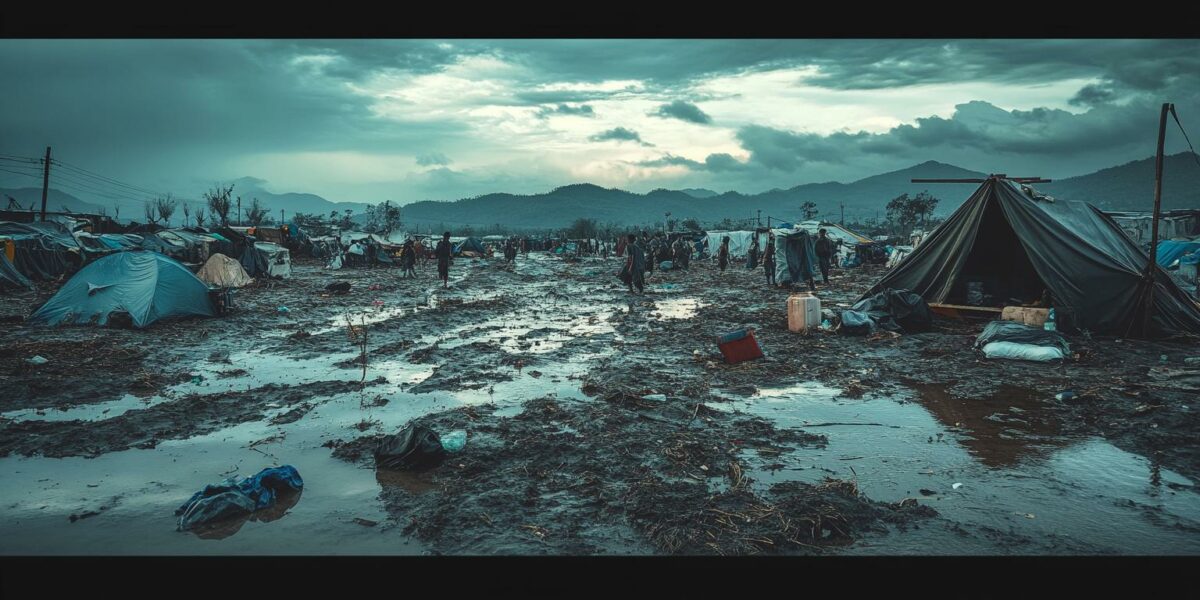Unprecedented Flash Floods Devastate Afghanistan
On 10 May 2024, the serene town of Baghlan faced an unexpected horror as flash floods swept through, causing massive devastation. Haroon Nafas, who was with his friends in a guesthouse, described hearing a loud crash, initially mistaking it for a plane crash. The flooding was so severe that it reached heights of up to 30 meters, dragging people from rooftops.
Nafas’s house, fortunately situated on a hillside, provided a safer refuge for his family. However, many others were not as lucky. The floodwaters spread over several kilometers, resulting in immense loss of life and property. 315 people perished in Baghlan alone, with thousands more injured or missing.
The aftermath of the floods left an indelible mark on the region, with over 2,000 homes destroyed. Similar disasters struck other provinces, like Ghor, where at least 50 lives were lost. This catastrophe highlighted Afghanistan’s vulnerability to natural disasters, exacerbated by ongoing conflicts.
Dr. Najibullah Sadid, an environmental researcher, emphasized the role of war in worsening these disasters. Toxic artillery and landmines left behind by warring parties have severely damaged the environment, disrupting soil and water resources.
The Impact of War on Afghanistan’s Environment
Between 2001 and 2021, the US dropped more than 85,000 bombs on Afghanistan, causing widespread environmental damage. In areas like Nangarhar province, where large bombs were deployed, plant yields have halved due to the spread of toxins. These toxins are carried by wind and water, further contaminating other regions.
The issue of mine contamination remains dire. As of 2021, only one out of Afghanistan’s 34 provinces had been declared mine-free temporarily. The rest still harbor explosive ordnance, endangering lives and hampering agricultural activities. Despite this, funding for mine action has drastically declined.
Sadid underscores the direct link between landmines and recent flash floods. Disrupted soil structure due to mines makes the land prone to erosion, exacerbating flood conditions. The Baghlan floods originated from a dry valley, highlighting the connection between war and environmental degradation.
Conflict-caused deforestation also plays a significant role. Afghanistan’s forest cover has shrunk drastically from 2.8 million hectares in 1970 to about 1.5% in 2016. This loss of vegetation, which normally retains rainwater, has made the land more susceptible to landslides and runoff, leading to extreme flash floods.
Humanitarian Efforts Amidst Natural Disasters
Sohila Akbari, a humanitarian worker based in Herat, has been leading relief efforts for over a decade. Her grassroots organization, Committee Akbari, provides emergency aid to the city’s poorest and disaster-struck populations. With funds from the Afghan diaspora and international donors, they distribute food, clothes, and tents.
Akbari herself was a victim of the devastating earthquakes that hit Herat in October 2023, killing over 2,000 people. Despite the personal loss and chaos, she resumed her aid distribution within days, driven by a strong sense of duty to help those in need.
Longtime climate journalist Laurie Goering emphasizes the importance of local actors like Akbari in ensuring successful aid distribution. She highlights the challenge of transferring large sums of money from governments to local communities effectively.
Goering also points to the United Nations Development Programme’s loss and damage fund as a potential source of compensation for the destruction in Afghanistan. This fund aims to help impoverished nations recover from climate-induced disasters through grants.
Challenges in Climate Finance and International Support
Since the Taliban takeover in August 2021, Afghanistan has been excluded from the global stage, including crucial climate talks. This exclusion hampers the flow of international funds necessary for addressing the country’s climate vulnerabilities.
Despite Afghanistan’s minimal contribution to global emissions, it remains highly vulnerable to climate change due to its arid climate and mountainous terrain. The lack of representation in climate forums like Cop28 exacerbates the problem, leaving the country without a voice in crucial discussions.
Rahmani, a climate expert, advocates for better climate awareness and education among Afghanistan’s youth. With 60% of the population being young, there is potential for significant impact through employment, education, and training in climate-related fields.
He also calls for accountability from high-emitting nations and warring parties, emphasizing their responsibility in contributing to Afghanistan’s current plight. International cooperation and smart policies are essential for mitigating the effects of climate change and rebuilding the country’s resilience.



SamuelSeraphim
Deforestation, war, floods…Afghanistan can’t catch a break! 😬
emilia
Are there any efforts to reforest the damaged areas? Seems like a crucial step.
Carson_Fatespeaker
Did the experts suggest any long-term solutions for preventing such disasters in the future?
DylanWhisperer
So sad to see the impact of war on the environment. 😢
SimbaSapphire
This is a very insightful article. Thank you for shedding light on these hidden issues.
liam
Wow, that’s horrifying! How can we help the people affected by these floods?